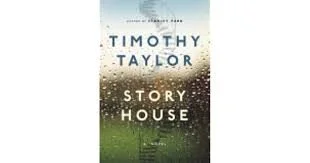I adored Timothy Taylor’s first novel, Stanley Park, published in 2003. My copy is now coffee stained and dog eared after years of re-reading. I’m not sure why I never got around to reading Taylor’s 2006 follow up, Story House, until now. Like Stanley Park, Story House is set in Vancouver and I always get a kick out of reading books set in places I am familiar with - it helps to bring the story to life for me. Much of this book takes place around a dilapidated house in the Downtown Eastside (my old neighbourhood), a structure that may be a relic of a world-famous architect, Packer Gordon.
Taylor does a deep, DEEP dive here into the world of architecture. The majority of the characters are architects or architecture enthusiasts, and there are many very, very detailed descriptions of settings in this novel as seen through the eyes of these architecture-fluent characters. It’s tough as a person without that architectural knowledge to envision what Taylor is describing as he waxes poetic about beams, light, angles and lines. I almost wish architectural drawings of the places described had been included in the book to help ground layman readers such as myself.
What kept me interested in this book was not the plot, around the revival of the building known as Story House, but the web of love, hurt and lies that tie together Graham Gordon, an architect, his half-brother Elliot, their wives, and their dead architect father. In both Stanley Park and in Story House, Taylor is a master at creating characters so layered, with such deep and intricate histories, that you are sure they are real and that he is writing biography. He is also skilful at depicting the complicated nature of families and relationships - this is what makes his writing stand apart for me.
That being said, I was somewhat disappointed in this novel, perhaps because I couldn’t fully immerse myself in the world of architecture in which the story is set. I also found the prose to be so dense, so determinedly poetic, that I often had to re-read sections. I found the end dissatisfying and wasn’t sure that it was the logical conclusion to the story. I look forward to reading more from Timothy Taylor, but this book doesn’t achieve “instant classic” status for me as his first novel did.
